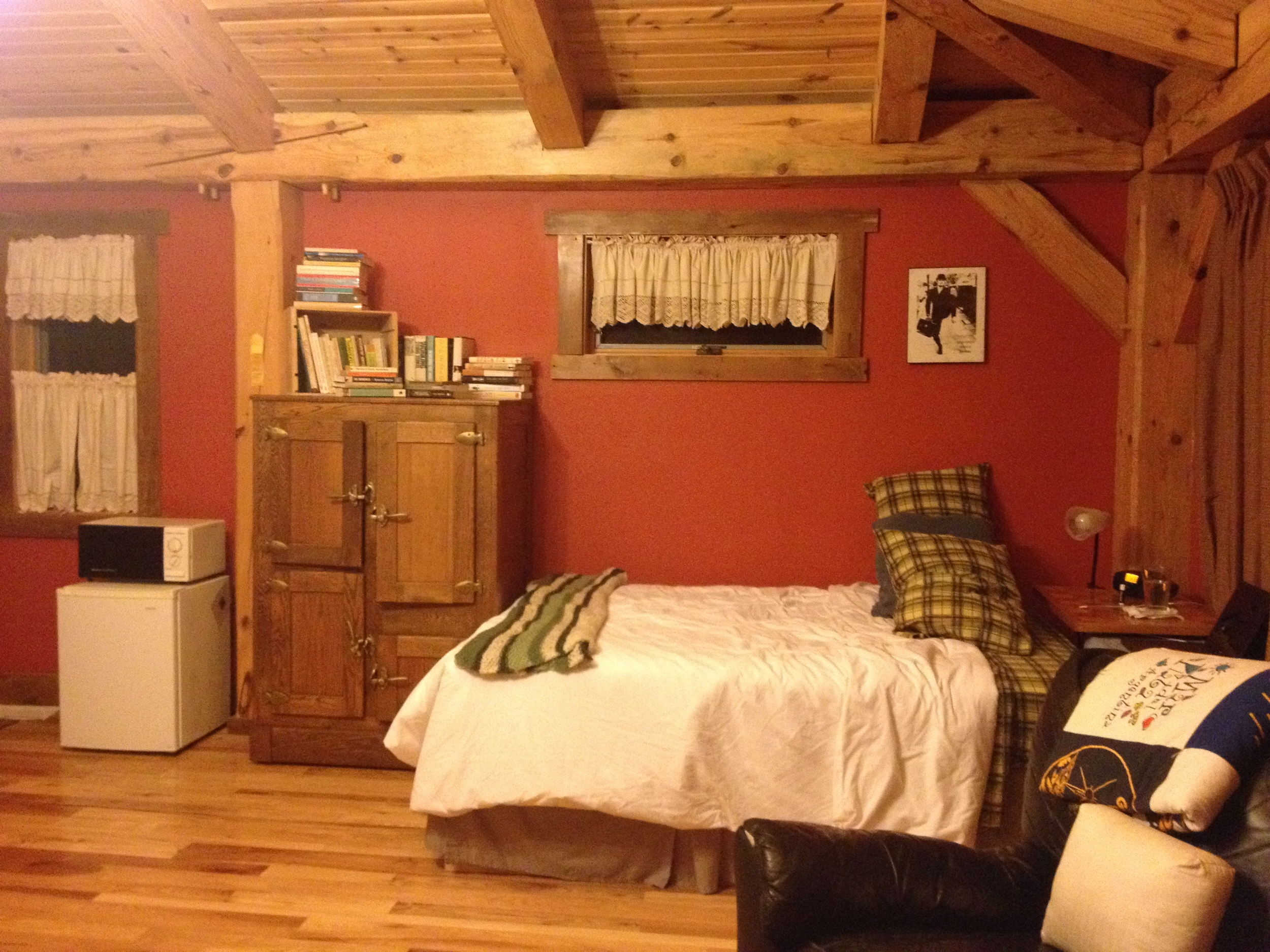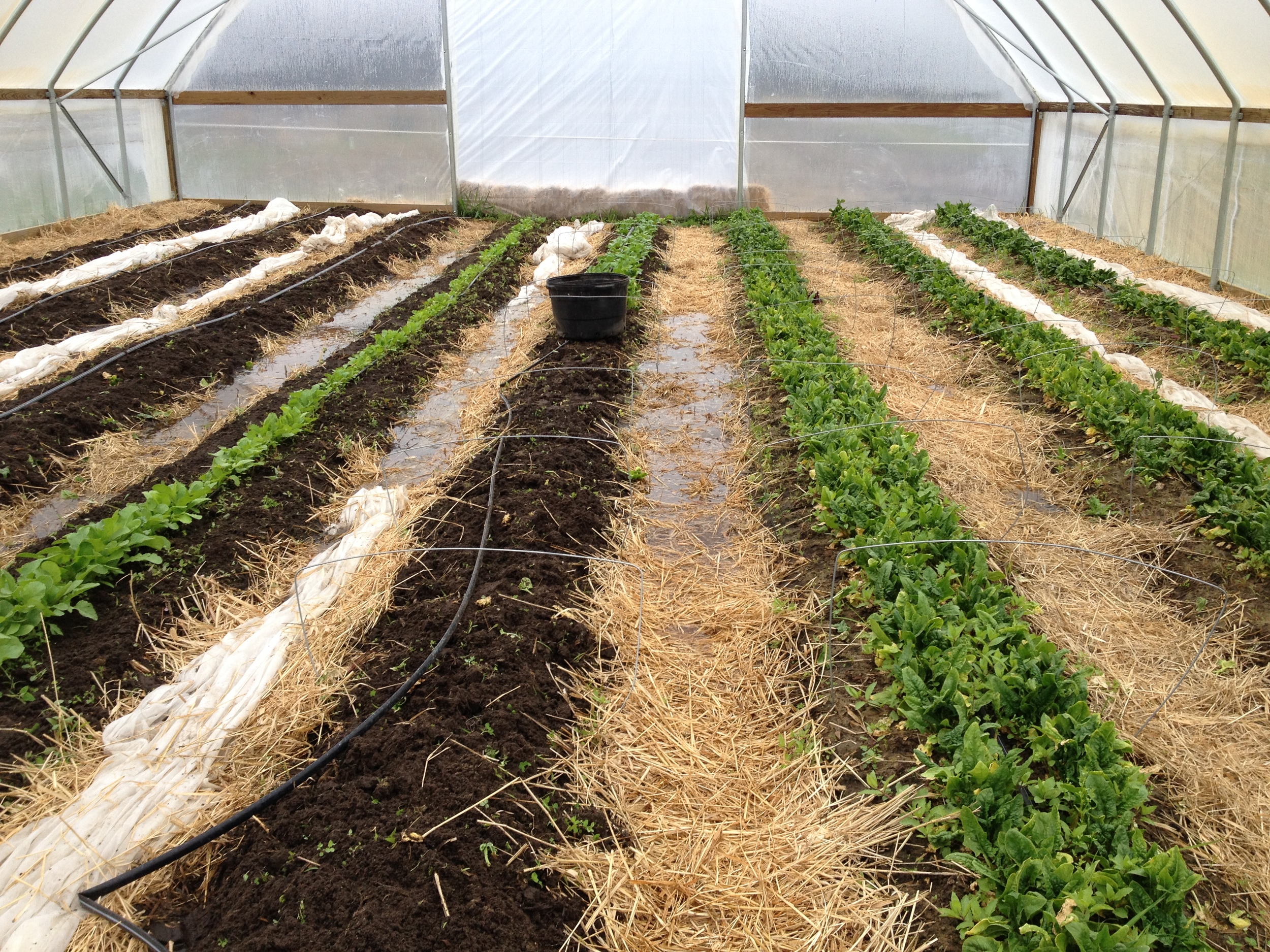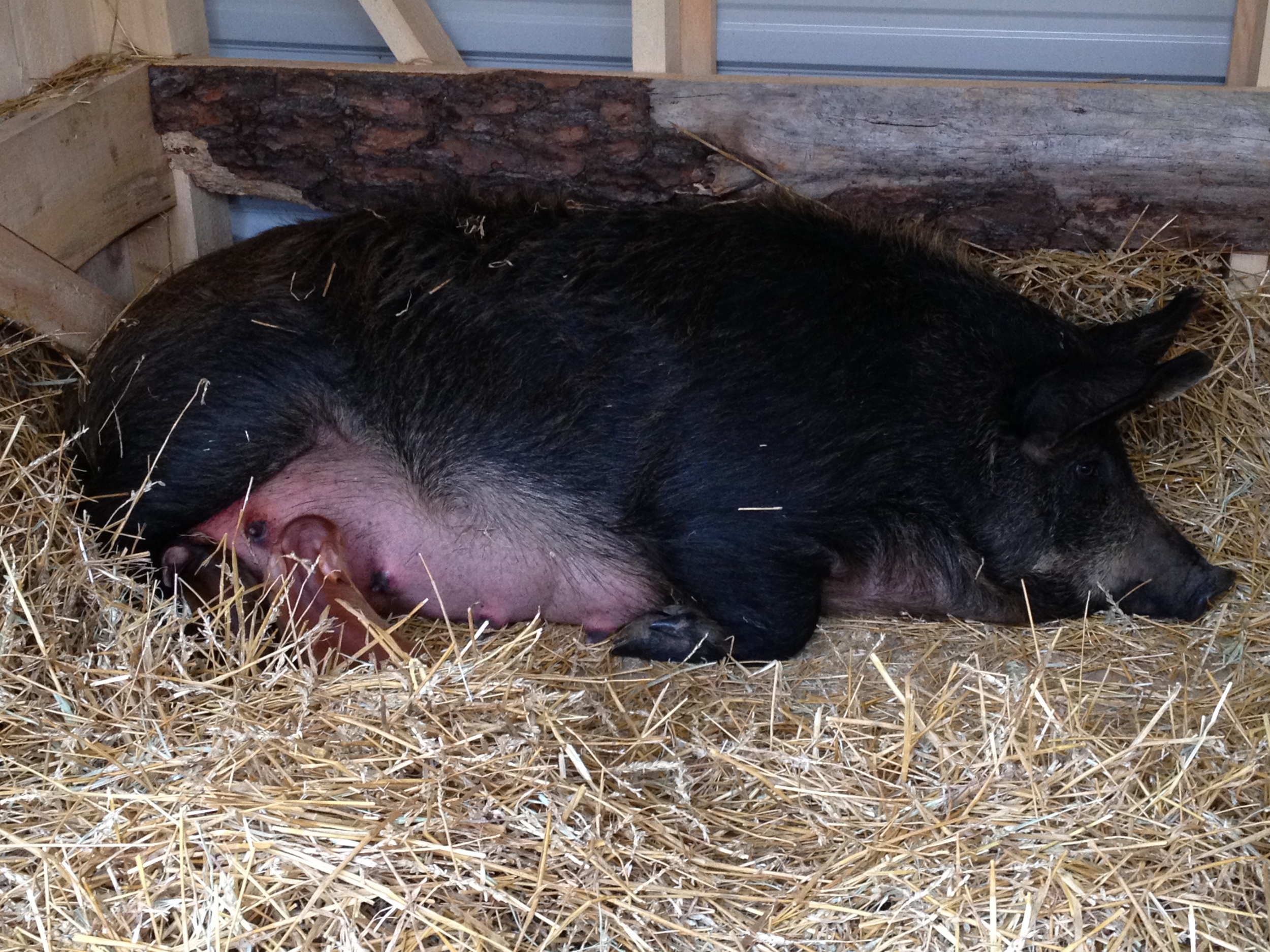At long last, my farming season is underway here at Boerson Farm in Princeton, Wisconsin. Although the season got off to a rainy start, I’m glad to have my boots back in the mud and my hands busy again. Boerson Farm is a small, diversified farm run by Mat and Danielle Boerson with some help and hindrance from Henry and Shep, two energetic and adorable boys who I am sure will get even more rambunctious as the days warm up and shoes come off. The farm produces organic veggies for a 50-member CSA and a few farmers markets in the neighboring towns, as well as pastured pork and a bit of grass-fed beef. The barnyard is rounded out with a very diverse flock of chickens, ducks, and guinea hens and three big beautiful draft horses, which are used for as much of the cultivation and haying as possible.
I spent this past week getting settled into my new digs (a mother-in-law apartment about 10 minutes away at the house of a lovely family who are big supporters of the Boersons’ endeavors) and jumping right into work on the farm. Because of the weather and the low ground, the fields were too soggy to work, so we mostly worked in the greenhouse, getting beds ready for tomatoes and peppers, got a bit of a jump on next week’s scheduled seeding, cutting seed potato, and gleaning what we could from the last of the winter spinach. One of the bigger projects for the week was inoculating oak logs with shitake mushroom spores, which was a very cool process to learn. We stood up the last batch of logs for easier and more productive harvests this year, and then stacked the newly inoculated and waxed logs in the evergreen hedgerow, where they’ll start to produce next year.
One of the most fascinating things this week has been getting to know the routines and the systems in place, which varies so much from farm to farm. For example, the Boersons use soil blocks to start seeds instead of plastic or styrofoam trays. To make the blocks, you mix up a slurry of compost, peat, vermiculite, pearlite, nutrients, lime, and water, then use a handheld press to shape blocks, which you squeeze out onto a prepared surface. You can seed right into these, and then when you’re ready to transplant you can stick the whole thing in the ground, which cuts down on lots of the plastic waste that growing vegetables can entail. There will be many more of these new skills to come, and I’m looking forward to learning what it takes to run a diversified farm on this scale, fitting many moving parts together to make a thriving farm that much closer to self-sustaining. I’m excited and energized for a great season!
Thinking about: new systems, year-round cash-flow, mud season
Eating: freshly made stovetop flatbreads with Boerson ham, cheese, greenhouse spinach, and tart apples; egg noodles with spinach, beef, and buttermilk sauce; parsnips, carrots, rice and beans in various forms
Reading: Haruki Murakami’s 1Q84, Kim Severson’s Spoon Fed: How Eight Cooks Saved My Life, Temple Grandin’s Humane Livestock Handling, Jeff Hertzberg and Zoe Francois’ Artisan Bread in Five Minutes a Day











